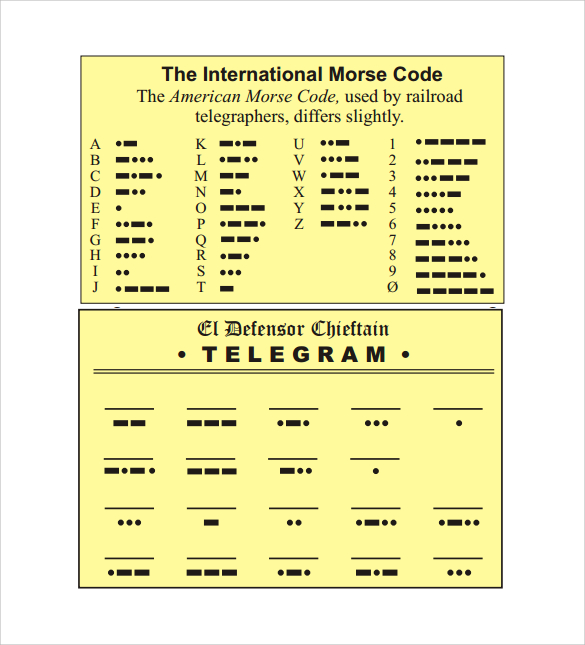
#International morse decoder code
As a result, translating international Morse code is possible through this tool swiftly. Thus, it's not a language that can be learned instantly.

There is a certain Morse code speed regarding messages sent this way. Not everyone is informed on what the different letters and numbers are in Morse code. If you ever want to translate Morse code quickly, then this is an ideal use for a decoder of this nature. Tools for proofreading grammar mistakes or communicating in several languages are essential nowadays. Yet the American Morse code still has its uses, with ten people in the US Air Force trained yearly. The final Morse code message in the USA was sent on July 12, 1999. This assisted greatly with getting information to forces as quickly as possible.Īs telecommunications advanced in the proceeding decades, Morse code began fading out. Messages would be transmitted between armed forces during the Second World War, including the air force, ground forces, navies, etc. Yet beginning in the early 1930s, it became a requirement for all pilots to know Morse code. During World War I, there was little to no possibility of radio communication between pilots in flight, though.

In the 1890s, Morse code began being used for early radio communication. The system went through various changes throughout the proceeding years.

He is therefore known to many as the one who invented the Morse code. It was in 1837 that Morse proceeded with the creation of an early forerunner to the modern-day International Morse code. Yet it needed a method to transmit natural language via electrical pulses and the silence between them. Historical SignificanceĪmerican artist Samuel Morse, physicist Joseph Henry, and mechanical engineer Alfred Vail developed an electrical telegraph system. Each letter in the alphabet, every number, and even punctuation have a relative code alternative in the Morse alphabet. These are represented as short, long pulses or dots and dashes.
#International morse decoder series
Morse code is a character-encoding system that allows operators to transmit messages via a series of electrical pulses. So, what is Morse code? This may be a question you are asking yourself.

To find out the morse code for each character of the International Morse Code, we can use the following binary tree. – – –”)Ĭlick on the above picture to open it in a new window. The code was designed taking into consideration the frequency of each character in the English language so that most frequent characters such as E and T consist of just 1 dot or dash (E = “.”, T = “–”) whereas less frequent characters may include 4 to 5 dots or dashes (e.g. The International Morse Code includes the 26 letters of the alphabet (there is no distinction between lowercase and uppercase characters), the 10 Arabic numerals (digits from 0 to 9) and a few punctuation and arithmetic signs such as +, -, = etc.Įach character consists of a series of 1 to 5 dots or dashes (also called “dits” and “dahs”). Morse code was named after Samuel Morse, one of the inventors of the telegraph. The Morse Code was designed to quickly transfer messages using a series of “dots (.)” and “dashes (-)”.


 0 kommentar(er)
0 kommentar(er)
